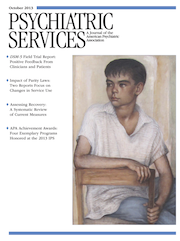In 1966, Charles Whitman, who was then a 25-year-old university student, shot and killed 16 people and wounded 32 from a rooftop, where he had gone, heavily armed, and opened fire until he was killed by police. The case became known as the case of the Texas Tower Sniper. In chapter 3 of The Origins of Antisocial Behavior, Giedd and colleagues describe this case as one that renewed discussion on brain pathology and violence. As revealed on autopsy, Whitman, it turned out, had a brain tumor affecting his amygdala, and many wondered whether it was the tumor that drove him to commit such an extreme act of violence. The chapter goes on to describe the amygdala and early studies of Kluver and Bucy, who described the phenomenology of lesions in the amygdalae of monkeys, including a lack of fear, hyperorality, and hypersexuality. The chapter also covers other noteworthy figures, such as Phineas P. Gage, who made infamous the notion that the prefrontal cortex plays a major role in mediating disinhibition, judgment, and decision making. The chapter highlights these tales to set the stage for subsequent discussion of specific brain regions and the latest data that address personality features of aggression, violence, and brain pathology. The third chapter of this book is only one of many that is full of rich information, laid out in a well-written and easily understandable format.
The book is structured across three sections. Part 1 covers advances in neuroscience, and each chapter provides excellent perspective in the areas of genetic and environmental factors, fMRI studies relevant to conduct disorder and psychopathy among children and adolescents, and neuroanatomy. Part 2 covers behavioral and clinical research, including separate chapters on preschool behavioral markers, assessment of children and adolescents, relational factors, bullying, and antisocial development. Neighborhood influences, epidemiology of mental health and substance use disorders as it relates to youthful offenders, and a description of a family-based program aimed at lowering recidivism among youths are also covered. Finally, Part 3 covers legal and policy implications related to legal cases and neuroscience and research development. The list of included topics is broad in scope and provides a full frame of reference of major issues in developmental theory related to emerging antisocial behaviors.
Psychiatry needs a book like this. With ever-increasing attention to the role of violence in our society and its relationship to mental illness, it is critical that we take a step back and understand from a holistic perspective issues that span the boundaries between neurology and psychiatry. Moreover, this book examines antisocial behavioral patterns from a lifespan and developmental perspective. An act of aggression is a momentary action that generally carries with it a story: a chain of events, complex interpersonal reactivity, impulsive or predatory traits, as well as social and environmental factors that contribute to the moment in question. Numerous questions remain about youths and violence and the maturing brain that this book attempts to address. For anyone interested in learning more about the science of antisocial behavior and its manifestations and origins across the lifespan, this book is one to read.

